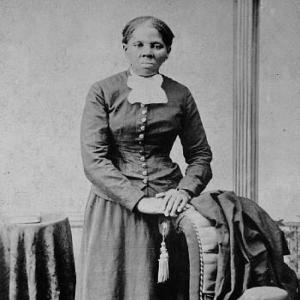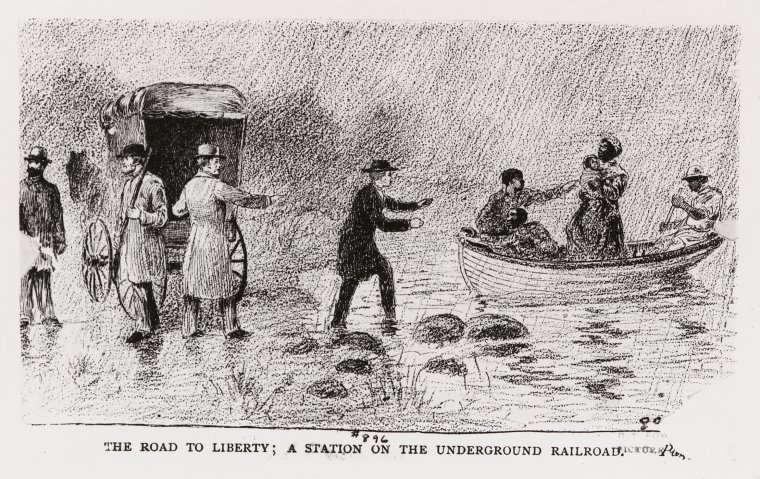The image depicted is titled The Road to Liberty: A Station on the Underground Railroad, and it was published sometime between the years 1800-1809, by unknown artists. This artwork depicts the challenges that so many strong and daring individuals, both free (Whites) and enslaved (African Americans) endured in their quest for freedom. The image can be found at the Schomburg Center for Research in Black Culture, Photographs and Prints Division, New York Public Library: Digital Collections.
The Underground Railroad was a successful network of hidden routes and safe homes in the United States from the early to mid-nineteenth century. It was a complex and multidimensional operation that not only permitted enslaved people to flee to free states, but also contributed to the abolition of slavery as a institution. When people hear the term “underground railroad,” they often anticipate an actual train system hidden underground. However, the subterranean railroad was neither a railroad nor an underground system. The only thing that the railroad system had that is still associated with it is the concept of transportation.

Underground Railroad passageway
The Underground Railroad consisted of stations made up of homes, schools, churches, and businesses, where enslaved individuals were directed to seek refuge while waiting to continue their journey. At these stations, people who believed that all humans were created equal, people who were willing to put their own lives on the line for the greater good of the world, provided food and shelter to them. “The main safeguard of runaway slaves was the old Anglo-Saxon idea that each man’s house is his castle. The old Quakers knew this well and would allow no one to enter a house in search of fugitives without a warrant, and by the time a search warrant could be secured the slave was many miles away” [1].The same people who aided in the search for freedom also shielded enslaved people from the racists views so many people held against them. They were willing to engage in any fight and overcome any obstacle to ensure these individuals exited the underground railroad and continued their quest for freedom and independence. While everyone along the Underground Railroad contributed to the abolition of slavery, conductors did an outstanding job of guiding the way; they were in charge of providing the fugitive slaves with the direction they needed to move from point to point. As depicted in the illustration, freed White people, commonly referred to as Conductors, risked their lives to get enslaved people off the boat and into the Underground Railroad for safety. These Conductors worked tirelessly to guarantee that these enslaved people were given the opportunity to be free. Harriet Tubman, a fugitive slave herself who led thousands of other fleeing slaves north, was one of the most famous conductors along the railroad network.

Harriet Tubman
While the Underground Railroad and slavery in general are frequently associated with African Americans solely, the railroad should also be associated with a diverse group of people because the enterprise was only successful because a vast number of White people, or Quakers, (along with free-born Blacks, Native Americans, etc.) appreciated and respected the concept of equality (above everything). “The association of Quakers with the underground railroad is a well-known ingredient of traditional Americana”[2].Without the teamwork and collaboration of all parties involved, this operation wouldn’t have helped thousands of enslaved African Americans gain freedom.
Slavery is often associated with arduous labor tasks and the mistreatment of Blacks by vicious slave owners, and rightly so, but many people overlook the bravery and strength displayed by these enslaved people (as well as several freed Whites) as they not only operated the Underground Railroad but also battled the many challenges that came with obtaining any measure of freedom.
[1] W.D. Waldrip, “A Station of the Underground Railroad,” The Indiana Quarterly Magazine of History, 1 June 1911.
[2] Larry Gara, “Friends and the Underground Railroad,” Quaker History, Number 1 (1962): 3–19
